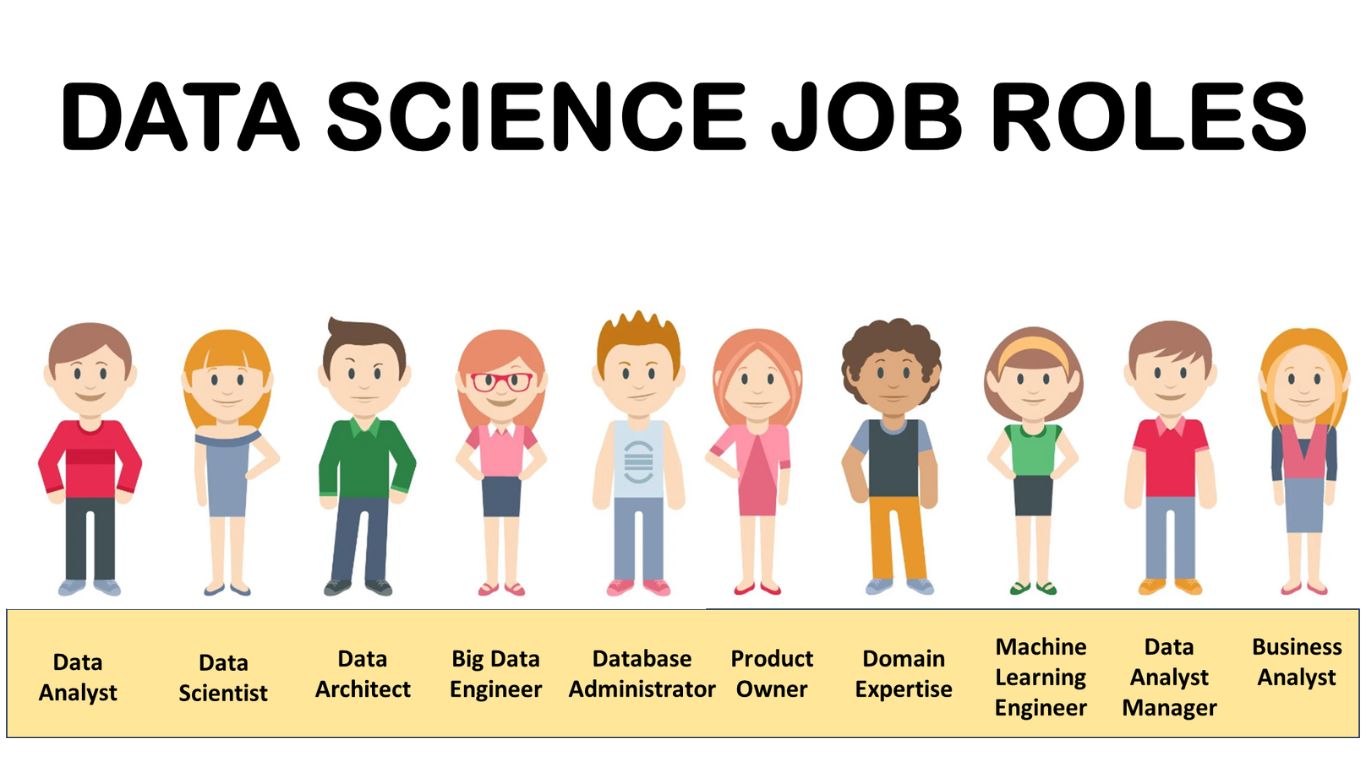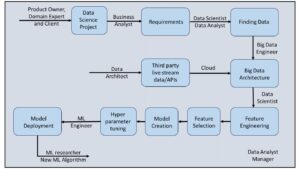A data science project isn’t a solitary endeavor; it’s a symphony orchestrated by diverse roles, each contributing their expertise to achieve project success. Let’s Unveil the Spectrum of Data Science Job Roles and their interplay in this data-driven narrative.
The inception of a data science project often stems from collaboration between the Product Owner, armed with domain expertise, and the client. Together, they conceive the project’s vision and objectives, aligning it with business needs.
The Business Analyst, the bridge between stakeholders and technical teams, meticulously gathers and crystallizes project requirements. They ensure clarity, capturing the essence of business needs for the project’s success.
The torchbearers of data, the Data Scientist and Data Analyst, collaborate to identify data sources vital for the project. They scrutinize and select sources, laying the foundation for insightful analysis.
Data isn’t confined; it often flows from external sources like weather data through APIs from other companies. Such data, acquired through payment or licensing agreements, enriches projects with real-time insights.
The data collected embarks on a journey to the Big Data Team. Here, the prowess of Big Data Engineers shines as they transform and store the data using robust architecture. Simultaneously, the Data Architect ensures harmonious integration into the database.
Once the data is gathered, transformed, and securely stored, the Data Scientist steps in. They embark on the data science journey, armed with curated data, to unravel insights aligning with project objectives.
The custodian of data access, the Database Administrator ensures secure cloud access to users based on their roles. Their vigilance maintains data integrity while facilitating seamless user access.
The data science expedition commences, traversing through feature engineering, feature selection, model building, and the fine-tuning of hyperparameters. Each phase navigates towards refining models for optimal performance.
Finally, the model, meticulously crafted, finds its place in the real world through the hands of the Machine Learning Engineer. They deploy the model, making it accessible for real-time use, bridging the gap between theory and practical application.
This intricate ballet of roles showcases the collaborative prowess behind a successful data science project. Each role, a vital note in the symphony, harmonizes expertise, weaving a tapestry of insights driving innovation and transformative impact.
Let’s look at the Responsibilities and Skills of various Data Science Job Roles:


